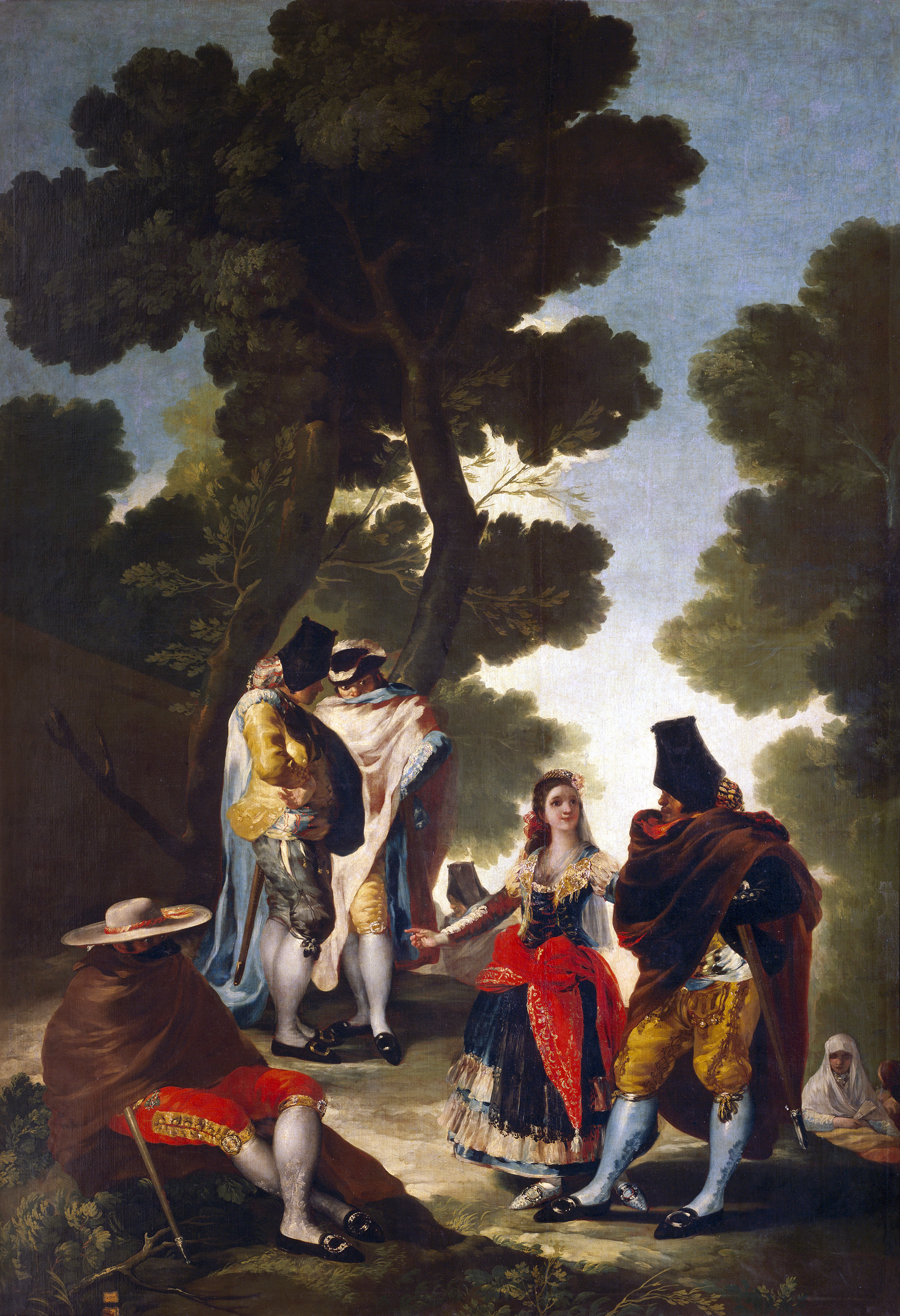Majo on:
[Wikipedia]
[Google]
[Amazon]
 ''Majo'' (masc.) or ''maja'' (fem.), also ''manolo'' and ''manola'', after the most popular names, were people from the lower classes of Spanish society, especially in
''Majo'' (masc.) or ''maja'' (fem.), also ''manolo'' and ''manola'', after the most popular names, were people from the lower classes of Spanish society, especially in
El Mundo - La musa del 'jabón' que enamoró a los poetas
File:Goya Maja ubrana2.jpg, Goya's '' La maja vestida'', c. 1798–1805
File:Manola-Ulpiano Checa.JPG, A typical ''manola'' with a folding fan by Ulpiano Checa
File:1922 spain jarez mantilla.jpg, A ''manola'' with mantilla, 1925
File:El majo de la guitarra.jpg, ''El majo de la guitarra'', painting by Ramón Bayeu, 1786
Los castizos madrileñosTópicos andaluces en el cine contemporáneo: de la españolada al poscostumbrismoCarmen Tórtola Valencia, pasión por el coleccionismo
History of Madrid Spanish culture Subcultures
 ''Majo'' (masc.) or ''maja'' (fem.), also ''manolo'' and ''manola'', after the most popular names, were people from the lower classes of Spanish society, especially in
''Majo'' (masc.) or ''maja'' (fem.), also ''manolo'' and ''manola'', after the most popular names, were people from the lower classes of Spanish society, especially in Madrid
Madrid ( , ) is the capital and most populous city of Spain. The city has almost 3.4 million inhabitants and a Madrid metropolitan area, metropolitan area population of approximately 6.7 million. It is the Largest cities of the Europ ...
, who distinguished themselves by their elaborate outfits and sense of style in dress and manners, as well as by their cheeky behavior.
They flourished from the late 18th to early 19th century, and to some extent later. ''Majos'' and ''majas'' were one of the favorite subjects of some 19th-century Spanish painters.
The ''majos'' and ''majas'' outfits were exaggerations of traditional Spanish dress. The style stood in strong contrast to the French styles affected by many of the Spanish elite under the influence of the Enlightenment
The Age of Enlightenment or the Enlightenment; german: Aufklärung, "Enlightenment"; it, L'Illuminismo, "Enlightenment"; pl, Oświecenie, "Enlightenment"; pt, Iluminismo, "Enlightenment"; es, La Ilustración, "Enlightenment" was an intel ...
. ''Majos'' were known to pick fights with those they saw as ''afrancesados'' ("Frenchified" – fops).
In Spanish, the word possesses derived forms such as ''chulapo'' and ''chulapa'', a version of ''chulo'' and ''chula'' in reference to their saucy attitude, as well as ''chispero'' and ''chispera'', among others.
Popularity
Although ''majos'' of both sexes were frequent subjects of painterFrancisco Goya
Francisco José de Goya y Lucientes (; ; 30 March 174616 April 1828) was a Spanish romantic painter and printmaker. He is considered the most important Spanish artist of the late 18th and early 19th centuries. His paintings, drawings, and e ...
, two of his ''majas'', '' La maja vestida'' and ''La maja desnuda
''The Naked Maja'' or ''The Nude Maja'' ( es, La maja desnuda ) is an oil on canvas painting made around 1797–1800 by the Spanish artist Francisco de Goya, and is now in the Museo del Prado in Madrid. It portrays a nude woman reclining on a ...
'' (the same model, naked), would gain international renown.
The outfit of the ''maja'' would influence the costume of the eponymous protagonist of Georges Bizet's French opera '' Carmen'' in the mid-19th century.
In the 20th century, with the popularization of Spain as a tourist destination, the ''manola'' or ''maja'', often holding a folding fan
A handheld fan, or simply hand fan, is any broad, flat surface that is waved back-and-forth to create an airflow. Generally, purpose-made handheld fans are folding fans, which are shaped like a sector of a circle and made of a thin material (su ...
, increasingly gained recognition as the image of a stereotypical traditional Spanish woman. Thus the ''maja'' became one of the popular and informal symbols of Spain, along with the bullfighter
A bullfighter (or matador) is a performer in the activity of bullfighting. ''Torero'' () or ''toureiro'' (), both from Latin ''taurarius'', are the Spanish and Portuguese words for bullfighter and describe all the performers in the activity ...
, who took the place of the ''majo''. Some of the 20th-century depictions of the ''maja'' became somewhat assimilated into the flamenco dancer (''la bailaora''). Nowadays, the increasing popularity of the ''maja'' has ended up eclipsing that of the ''majo''.
The image of a ''maja'' was the trademark of the Jabón Maja Myrurgia soap
Soap is a salt of a fatty acid used in a variety of cleansing and lubricating products. In a domestic setting, soaps are surfactants usually used for washing, bathing, and other types of housekeeping. In industrial settings, soaps are use ...
, one of the classical souvenirs from Spain. The brand's portrait of the ''maja'' in the soap boxes and wrappings was based on the person of Carmen Tórtola Valencia (1882–1955), a famous Spanish dancer of the early 20th century.Gallery
See also
* Guappo *Apaches
The Apache () are a group of culturally related Native American tribes in the Southwestern United States, which include the Chiricahua, Jicarilla, Lipan, Mescalero, Mimbreño, Ndendahe (Bedonkohe or Mogollon and Nednhi or Carrizaleño an ...
*Cholo
''Cholo'' () is a loosely defined Spanish term that has had various meanings. Its origin is a somewhat derogatory term for people of mixed-blood heritage in the Spanish Empire in Latin America and its successor states as part of ''castas' ...
*Chicano
Chicano or Chicana is a chosen identity for many Mexican Americans in the United States. The label ''Chicano'' is sometimes used interchangeably with ''Mexican American'', although the terms have different meanings. While Mexican-American ident ...
References
External links
{{commons category, Manolos and ManolasLos castizos madrileños
History of Madrid Spanish culture Subcultures